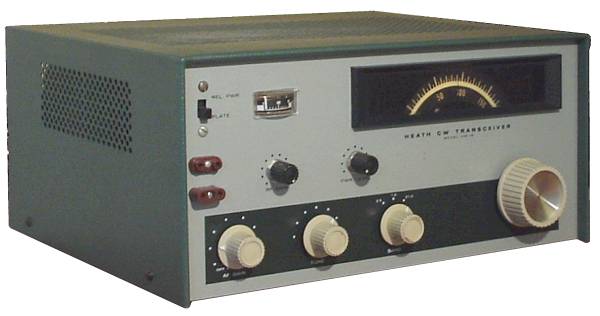For my 13th birthday in June of 1970, my parents gave me a metronome kit from Heathkit. It was actually a beautiful thing with a wooden cabinet. I was playing guitar at the time, so it made some sense, but it still seemed odd. You could buy a wind-up Bakelite one from a music store for a few dollars. This was several times the cost and you had to put it together to boot. My parents really surprised me with that gift. I had the thing built and working within a few hours even though it was my first time using a soldering iron to put together the electronics. Little did I know what was in store for me later on.
A few months later the guitar was gathering dust as I spent most of my time struggling to make QSOs using my WWII-era surplus radio equipment. I would wake up in the morning before school and give it a go, then rush home afterward and try again. Each day when my dad came home I would tell him about the contacts that had gotten away (the ones I only heard), and on rare occasion the ones I actually got through to. Occasionally he would pop into my room and watch me soldier on.
It was the time of the Vietnam War, and ham radio operators were providing a valuable service to the public simply by relaying short messages from home to their loved ones and getting the replies back. (Remember long distance phone calls were very expensive, several dollars a minute, and very hit or miss — especially with international calls. Nobody was speaking to their soldier sons/husbands via telephone, and overseas mail service took many weeks.)
One weekend the local radio club had setup a demonstration of ham radio equipment in a shopping mall. It was our family habit to eat at a cafeteria there Saturday night, so we stopped to chat with a couple of the club members on our way to dinner. I remember showing my dad a couple of pieces of radio equipment assembled from Heathkits, but one in particular almost spoke to me. It was a HW-16. A radio designed for the novice. It had an unheard of ‘low’ price of $99 (that’s about $550 in today’s dollar). Years later my father told me that I stroked the top of that radio with eyes as large as saucers and said “Could you imagine what it would be like to have something like that?”.
We were blessed to have my brother with us through the Christmas holiday of 1970. My mother was in seventh heaven trying to fatten him up. He had taken some electronic classes during his Army training, and was used to radio communication as he was flying helicopters during the war. So I was always trying to show off my fancy equipment, and he was loving enough to pretend to be impressed.
When Christmas morning came, I was awestruck when he gave me a pilot’s jacket (dark green silk on the outside and bright orange on the inside). I wore that with great pride for years. I was even more awestruck when my parents brought out a large box from Heathkit and placed it in front of me.
As I said before, my parents were thrifty folks, having survived the depression. They didn’t believe in extravagant gifts. Most of the time it was things that were needed, like clothing. A big treat was a book, or maybe a toy — but those things were the exception. That Heathkit box contained what I forevermore described as the best present I ever received — a HW-16 of my own.
I spent the rest of my Christmas break from junior high putting that kit together and I almost passed out when I turned it on and — it didn’t work! Oh the tubes lit up, and nothing bad happened (like smoke), but it didn’t make a sound either. I was too nervous to read further in the instruction book (beyond the first two steps: plug it in and turn it on).
My brother was quick to volunteer to help. He and I swapped places in front of the radio and within a few minutes he had the sweet sound of Morse code coming out of the speaker. Everything worked, I had been careful putting it together, but tuning-up a radio receiver was a new experience to me.
This gift opened up a new world for me, and I used it to fill up several log books with contacts (over a thousand of them) until I retired it in May of 1979.









